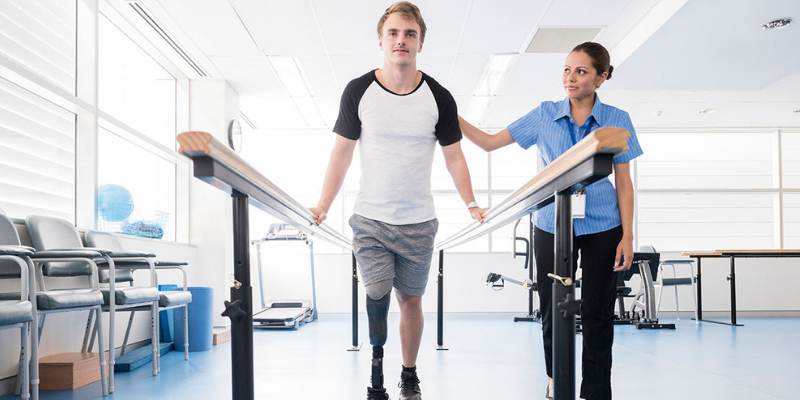Posted On: September 13, 2019 by BioAdvance Prosthetic Solutions in: General Physical Therapy Prosthetic

Getting used to a life-altering event such as amputation is never easy. In addition to emotionally grieving the loss of your limb, you must also physically get used to using a prosthesis. Luckily, there are a number of health professionals along the way who can help you, including physical therapists. Here are a few things you can expect during therapy:
The physical therapist will help you care for your residual limb.
After surgery, your residual limb will need to be shaped, massaged and readied for a prosthesis. The physical therapist will use an elastic bandage or shrinker to shape your residual limb, while monitoring it for circulation, pressure sores or misshaping. They will also help toughen your residual limb by massaging it. This gets it ready for a prosthesis by desensitizing the nerves.
You’ll be taught many techniques to help you.
Going over all the new techniques you’ll be shown can seem daunting, but your physical therapist is there with you every step of the way. You’ll be shown specific exercises tailored to you, so you can begin to strengthen your limb. There will also be lots of hands-on positioning and resistive techniques used as you begin walking. You’ll learn how to get around smoothly when it comes to daily living activities like getting dressed, standing up/sitting down, carrying items and so on.
Physical therapy can help prevent or reduce contracture.
A contraction occurs when you haven’t moved your residual limb enough. Your muscles, skin or tendons become shortened, prohibiting normal movement of the joints and tissue. This may keep you from straightening your knees and elbows all the way. A physical therapist can show you exercises, stretches and good positions to prevent this type of contracture from happening.
If you face these scenarios, seek out physical therapy.
After surgery and before you receive your prosthesis are most often thought to be the most crucial times for physical therapy, but there are other times you may benefit from physical therapy as well. Sometimes, you may not be able to use your prosthesis for a while, due to a variety of factors (neuropathy, skin break-down, additional surgery, etc.). Other times, people just decide they no longer want to use a prosthesis. In either case, you run the risk of developing contracture. Continued visits to your physical therapist can help prevent that!
Seeking out physical therapy at the right time is key to preventing many of the problems new amputees face. At BioAdvance Prosthetic Solutions, we can help you adjust to all the changes you may face as a new amputee. Give us a call and set up an appointment today to find out how we can help restore you to an active life!

-
View AllDennis | Sep 15th 2019 @ 6:23 PM
Great Information and picking a great physical therapist is very important.